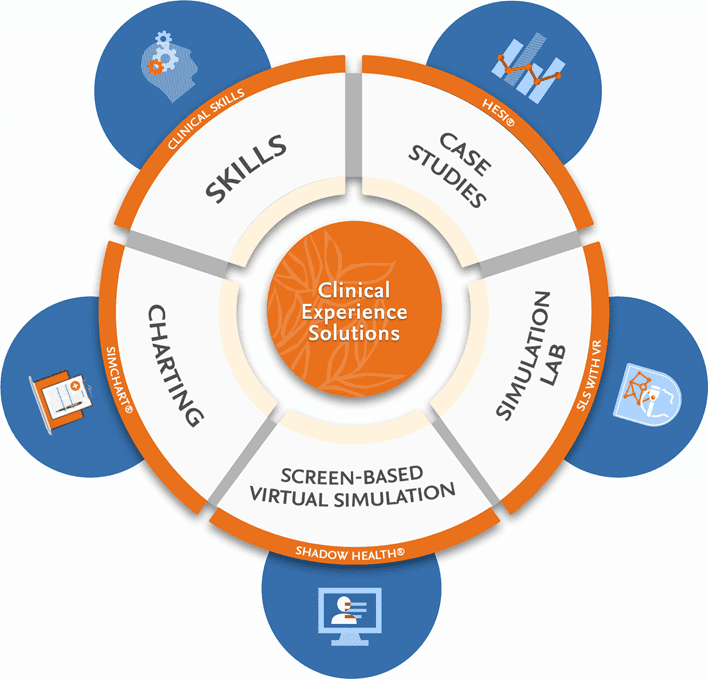Shadow Health Assignments
Teaching and Learning Documentation for Supporting Nursing Students’ Practice Readiness
The American Nursing Association (ANA, 2010) says that clear, accurate, and easy-to-read documentation is a very important part of safe, high-quality nursing practice. When we look back at the history of nursing in the United States, we can see how the way nurses document things has changed. It used to be more about talking, but then it became about writing things down, both on paper and using computers. This became a way for the healthcare team to communicate better (using systems like the Nightingale System, Nurses Progress Notes, Patient Medical Record, Problem Oriented Medical Record [POMR], SOAP [Subjective, Objective, Assessment, Plan] notes, and Electronic Health Record [EHR]). The main point of documentation, though, has always been the same – to write down important and exact information about a patient so that they get good and safe care. Teaching students how to do this kind of documentation is very important in nursing education, as it prepares them for real nursing practice.
I am a learning scientist, and I work to help teachers and students with the mix of technology, teaching methods, and what they’re learning (Shah, 2021). So, in this article, I focus on the idea of helping nursing students become good at documenting things, using Elsevier’s Course-based SimChart® as an example. This digital learning tool started in 2021 and is part of a collection of tools made by Elsevier to help students learn how to be nurses (look at Figure 1). Course-based SimChart lets students practice documenting while going through real-life patient situations. This article gives a general view of important things about documentation and invites nursing teachers to look more deeply into the information. I’ll also explain the main ideas that show why this skill is so important for future nurses. Then, I’ll talk about how more nursing education programs are using Electronic Health Records (EHR) and unfolding case studies to teach documentation. Finally, I’ll show how it’s a good idea to help students practice documenting in different nursing classes. Other writings also show that using digital tools like Course-based SimChart can really help teach nursing students how to document things and get ready for nursing practice.

Struggling to meet your deadline?
Get your assignment on Teaching and Learning Documentation for Supporting Nursing Students’ Practice Readiness done by certified MDs and PhDs in the USA. ORDER NOW!

The Main Purpose of Nursing Documentation
The most important reason for documenting things is to help with communication. Usually, it’s the registered nurse (RN) and the advanced practice registered nurse (APRN) who take care of writing down important information about patients and sharing it with others during their healthcare journey. The information they put down about patient care is used in two main ways:
Optimizing Success in LPN/LVN Education
1. Communication within the healthcare team: Writing down things accurately and quickly helps everyone on the healthcare team understand important details about patients. This includes things like assessments, problems patients have, records of medicine given, educating patients and their families, and more. It also covers how patients are doing over time, changes in their condition, and the plans to take care of them.
2. Communication with other professionals: The records made can be used by people who work in the hospital but aren’t directly taking care of patients. It can be proof for certifications, legal matters, rules and laws, payments, research, and improving how things are done.
The American Nursing Association (ANA, 2010) talks about these uses of documentation in more detail. A review by Alkouri and colleagues (2016) also shows how important nursing documentation is. They also talk about how good documentation and using electronic systems can be really helpful. Understanding the principles of nursing documentation (shown in Table 1) can help us understand its purpose better. The extra resources in Table 1 support these principles with more information.
Table 1. Principles of Nursing Documentation
Nursing Documentation Principles Important Ideas from the American Nursing Association (2010) Extra Resources
Characteristics of documentation Quality documentation should be clear, easy to understand, accurate, consistent, relevant, complete, and easy to read. It should also be private, safe, checked, easy to find, and show the nursing process. ‘Gaps, mishaps and overlaps’. Nursing documentation: How does it affect care? by Charalambous and Goldberg (2016)
How to write things down and using the same terms When writing, everything should make sense and be the same across all patient records. This means having the same terms, short forms, and symbols. Every entry should have a date and time, and the person who wrote it should be known. Standardized nursing language: What does it mean for nursing practice by Rutherford (2008)
Education and training Teaching nurses how to do good documentation should be really important. This includes knowing how to use systems, rules, and steps for documentation at all levels of care. Electronic nursing documentation interventions to promote or improve patient safety and quality care: A systematic review by Bridie McCarthy and colleagues (2018)
Teaching and Learning Documentation for Supporting Nursing Students’ Practice Readiness
Table 1. Nursing Documentation Principles
For teachers who want to help students learn about documentation, Course-based SimChart is a way to practice a lot before working with real patients in the hospital.
Why EHR Practice is Important in Nursing Education
If documentation helps with communication, then Electronic Health Records (EHRs) provide a way to do that. According to the Institute of Medicine (IOM, 2003):
“EHR are important parts of an EHR system… These systems include collecting electronic health information about people, where health information is about a person’s health or healthcare they get; having instant electronic access to information about people and populations for authorized users; providing knowledge and help with decisions to improve patient care quality, safety, and efficiency; and making healthcare processes more effective. These records are used by places like hospitals, nursing homes, and individuals.”
The Future of Nursing Report 2020-2030 (2020) has encouraged nursing programs to prepare students for using technologies like EHRs. In a recent study, Ranjbar and colleagues (2021) found that using electronic software helped nursing students with their documentation, especially in following the right standards and being thorough. Students also liked using electronic documentation because it saved them time.
It’s important for nursing students to practice writing down information they get during clinical experiences. Repsha and colleagues (2018) and Badowski and colleagues (2018) looked into how using simulated EHR charting during practice can help students learn about healthcare technology. A review by Ragunathan and colleagues (2021) showed that nursing programs are starting to use case studies with EHRs to teach students.
In Course-based SimChart, there are empty electronic health records (EHRs) where students can practice writing down information from their clinical experiences. This can be used for specific courses or during class or lab time to practice different situations and what to document. Teachers can also show students how to use EHRs in class.
Using Unfolding Case Studies to Learn
It’s clear that hands-on experience is a great way to get nursing students ready for real practice. While practicing on blank sheets during clinicals is helpful, it might not give students enough variety in patients they deal with during their studies. With the challenges from the COVID-19 pandemic, getting real clinical experience has been tough. This is where case studies come in, especially unfolding ones. They give nursing students a chance to practice writing down information and using their critical thinking skills.
Unfolding case studies are about patients whose situations change over time in unexpected ways. This means students have to keep reassessing and making new plans for their care every time they “meet” the patient. Barber and Schuessler (2018) explain this approach. West, Usher, and Delaney (2012) and Munn and colleagues (2021) also talk about using unfolding case studies to help students learn. It’s also good practice for the next generation NCLEX (NGN) which tests students’ ability to make decisions in clinical situations.
Course-based SimChart has case studies where patients’ situations develop over time. Students get to see the situation unfold and make decisions about their care. These case studies also come with quiz questions to test what they’ve learned.
Learning Documentation in Courses
Brown, Collins, and Duguid (1989) suggested that learning and doing should go together. They say that to learn things well, students need to practice them in real situations. This applies to documentation too. Learning how to write down information and use EHRs can’t just be taught as a separate thing. Even when students use EHRs and case studies, they need to practice in their courses.
Course-based SimChart can be used in different courses where documentation is important. For example, Health Assessment, Fundamentals, Medical-Surgical, Pediatrics, Women’s Health, and Mental Health courses can all use it. This way, students can learn step by step and teachers can guide them.
To wrap up what we’ve talked about, I’d like to mention Chung and Cho’s (2017) study about nursing students and teachers using EHRs. They found that there should be good and realistic training when teaching nursing documentation with EHRs.
In conclusion, this article has shared important points backed up by resources:
1. Documentation helps with communication.
2. Learning to use EHRs is crucial for the future of nursing.
3. Unfolding case studies are a great way for students to practice writing down information in realistic situations.
4. Learning about documentation should happen within relevant courses.
5. Course-based SimChart is a good way to teach nursing students about documentation and using EHRs.
I hope these insights are helpful. As part of Elsevier’s Applied Learning Sciences team, I’ll keep working to understand how our digital learning solutions can help nursing students learn better.

Dont wait until the last minute.
Provide your requirements and let our native nursing writers deliver your assignments ASAP.